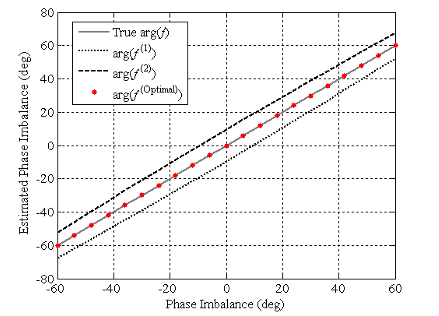




Did you find this useful? Give us your feedback




















54 citations
51 citations
...However fully polarimetric SAR systems suffer from the disadvantage of doubled pulse repetition frequency, which halves swath width [8] and challenges the power budget....
[...]
...and low susceptibility to cross-channel errors and noise [8], transmits circularly polarized signal and receives linearly horizontal and vertical polarizations simultaneously....
[...]
40 citations
...A polarimetric calibration method using a gridded trihedral has been successfully applied to a hybrid polarimetric SAR system [20]....
[...]
...Ignoring noise, the measured radar signals in the two linear polarization channels can be expressed as [20] [ MRH...
[...]
...Various methods have been proposed for calibrating full-polarimetric radar systems [18], [19], as well as hybrid polarimetric synthetic aperture radar (SAR) systems in the circular transmitting and linear receiving mode [20], [21], which have a similar architecture with our hybrid GPR system....
[...]
29 citations
...Since the 2000s, CP SAR has become a new research trend [16,18,19]....
[...]
22 citations
...Very limited work has been published on Compact SAR calibration [7], [8]....
[...]
...However, both Freeman and Quegan calibration methods [7], [8] assume that the Compact transmits a perfect circular polarization (CP)....
[...]
...Freeman’s model has been adopted in [8] and a calibration method was suggested using the Amazonian forest and corner reflectors....
[...]
146 citations
136 citations
...Their use for calibrating spaceborne FP SAR systems is discussed in [16]–[22]....
[...]
...1(c)], while the polarimetric active radar calibrators (PARCs) include three types [16], denoted as PARCX , PARCY , and PARCP , respectively, having signature matrices...
[...]
127 citations
...When a polarized electromagnetic wave traverses the ionosphere, its interaction with free electrons and the Earth’s magnetic field leads to rotation of the polarization vector [4], [15]....
[...]
...However, the ionosphere can significantly affect such systems; in particular, L- and P-band spaceborne SAR measurements will suffer from Faraday rotation (FR) [1]–[4]....
[...]
...However, this can be removed by using (1) to provide an independent estimate of FR, where TEC is given by the global ionospheric TEC maps estimated by the Global Navigation Satellite System (GNSS) and use is made of the IGRF10 model for the Earth’s magnetic field [4]....
[...]
...5◦ in latitude [4], [23], with an overall root-mean-square (rms) error of 3–5 TECU [23], [24]....
[...]
121 citations
...However, such a system could also be severely affected by FR [11]–[14]....
[...]
...A way to reduce the effects of FR was suggested by Raney [8] when he introduced the hybrid mode (also called the π/2 mode [11] or circular transmit and linear receive (CTLR) mode [12]) which transmits on circular polarization and receives on the two linear (H and V) polarizations....
[...]
70 citations
When a polarized electromagnetic wave traverses the ionosphere, its interaction with free electronsand the Earth’s magnetic field leads to rotation of the polarization vector [4], [15].
An SNR of at least 50 dB seems necessary to reduce the phase error in 1 to tolerable levels, which gives some guide to the required size of the passive calibrators, the performance of the active calibrators and the dimensions of the low backscatter background on which they must be positioned.
gridded trihedrals, as used in Scheme 5 have the advantages of providing large beamwidth and giving average polarimetric noise (i.e., the coherent averaging of scattering vectors from different angular positions) less than -30 dB [22].
The authors assume a CTLR mode SAR system that transmits right-circular polarization chirps and receiveslinear (H, V) polarization echoes.
Note that in these simulations the data were corrupted with the maximum values of the radar system errors,i.e. | f | = 1.5 (3.5 dB), arg{f} = /3 (60) and |1| = |2| = 0.1 (-20 dB), |c| = 0.32 (-10 dB), in order to test the proposed algorithms severely.
In contrast, scheme 6’s use of a trihedral and dihedral instead of gridded trihedrals brings the merits of simple construction and little effect from rain, but the narrow beamwidth of the dihedral causes orientation difficulties, and the dihedral suffers from high polarimetric noise due to pointing error [22].